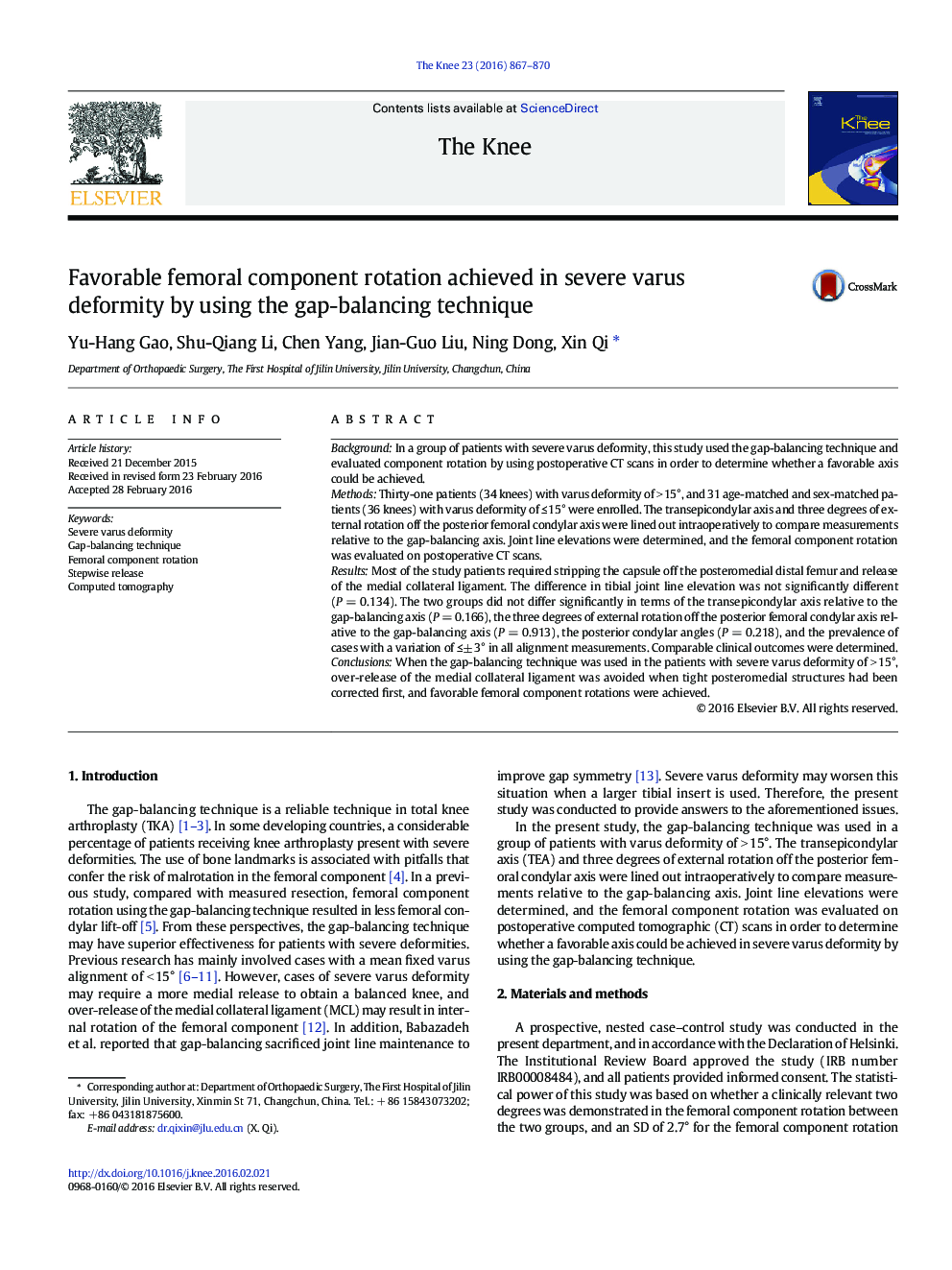| کد مقاله | کد نشریه | سال انتشار | مقاله انگلیسی | نسخه تمام متن |
|---|---|---|---|---|
| 4077126 | 1410900 | 2016 | 4 صفحه PDF | دانلود رایگان |

BackgroundIn a group of patients with severe varus deformity, this study used the gap-balancing technique and evaluated component rotation by using postoperative CT scans in order to determine whether a favorable axis could be achieved.MethodsThirty-one patients (34 knees) with varus deformity of > 15°, and 31 age-matched and sex-matched patients (36 knees) with varus deformity of ≤ 15° were enrolled. The transepicondylar axis and three degrees of external rotation off the posterior femoral condylar axis were lined out intraoperatively to compare measurements relative to the gap-balancing axis. Joint line elevations were determined, and the femoral component rotation was evaluated on postoperative CT scans.ResultsMost of the study patients required stripping the capsule off the posteromedial distal femur and release of the medial collateral ligament. The difference in tibial joint line elevation was not significantly different (P = 0.134). The two groups did not differ significantly in terms of the transepicondylar axis relative to the gap-balancing axis (P = 0.166), the three degrees of external rotation off the posterior femoral condylar axis relative to the gap-balancing axis (P = 0.913), the posterior condylar angles (P = 0.218), and the prevalence of cases with a variation of ≤± 3° in all alignment measurements. Comparable clinical outcomes were determined.ConclusionsWhen the gap-balancing technique was used in the patients with severe varus deformity of > 15°, over-release of the medial collateral ligament was avoided when tight posteromedial structures had been corrected first, and favorable femoral component rotations were achieved.
Journal: The Knee - Volume 23, Issue 5, October 2016, Pages 867–870